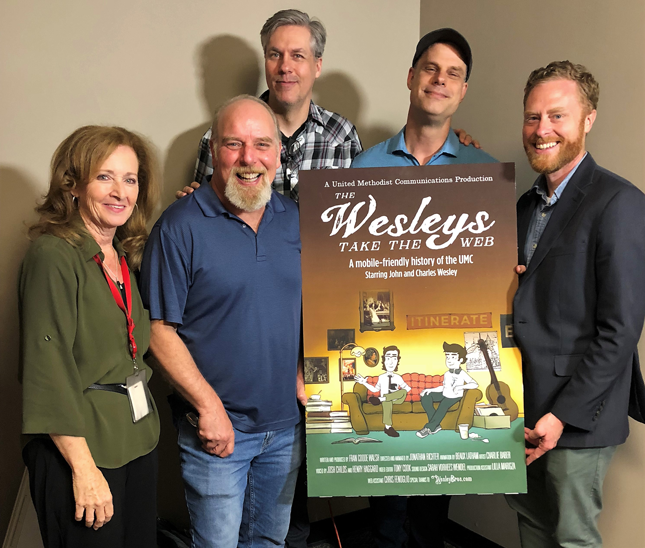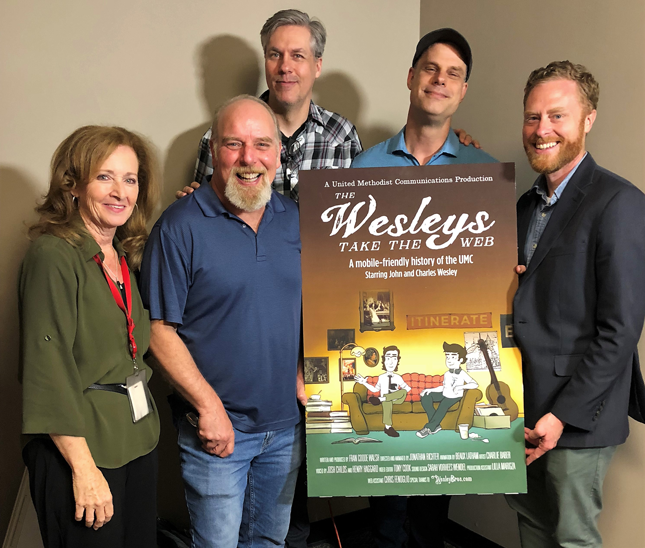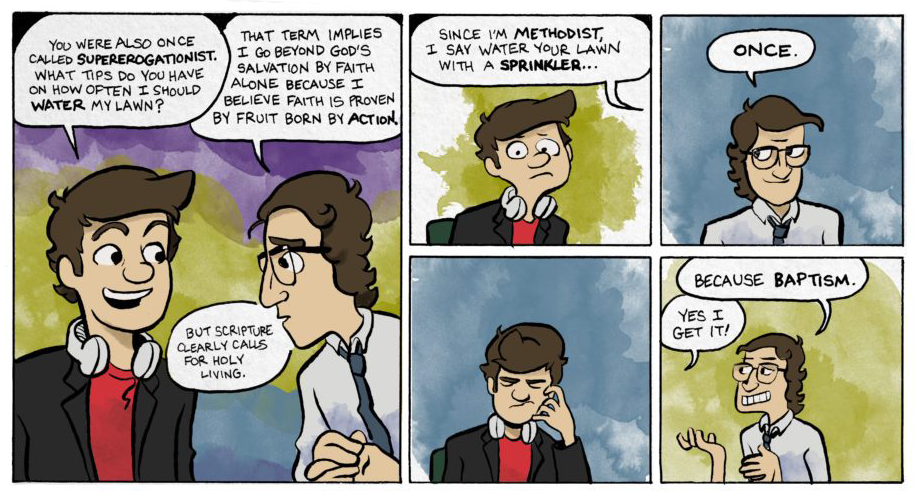How do you take the founders of Methodism, the original Bible Moths, out of mothballs and make learning about them fun, engaging and relevant for both young and old, digital natives and digital newbies? One need only look at the popularity of primetime cartoons and animated blockbuster movies for an answer: make them animated!
Downloadable resources
- Download the videos for classroom use or share them on your website at umc.org/wesleybros.
- Use these questions to guide your discussions in a small group or other setting.
Animation has been used for everything from explaining scientific principles to marketing products and has a unique ability to engage audiences of all ages, convey complex ideas simply, and address sensitive issues.
Fran Coode Walsh, director of member communications at United Methodist Communications, loves to visit the United Methodist archives at Drew University, a place she frequents to find more of the stories preserved there. So when she discovered comic books featuring some of the founding fathers of Methodism collected by the General Commission on Archives and History, her wheels started turning: Why not use animation to make United Methodist history relevant to a young and digitally-savvy audience?
Walsh, an experienced TV and video producer, knows it’s important to be continually innovative in telling the stories of The United Methodist Church. “We needed to make it relevant and packaged in a way that’s appealing to the eyes and ears of young people, as well as providing a fresh way to engage all of our audiences, no matter their age," she says.
Walsh knew that meant creating something that was both mobile- and social media-friendly. The result is a short animated video series featuring the likenesses of the Wesley Bros, a weekly web comic by the Rev. Charlie Baber. The series explores the history of the church with John and Charles Wesley as modern-day animated characters.
“I have a history in youth ministry, so my job has always been to take something complex and explain it to a teenager in a way that matters to their heart and their life,” said the Rev. Baber in a recent United Methodist podcast. “I always loved comics and graphic novels because they helped visually describe things in a way that’s different from describing them with words.”


The team that created "The Wesleys Take the Web" gathered at United Methodist Communications in June 2018. Front row (left to right): Fran Coode Walsh, script writer and producer; Henry Haggard, voice of John Wesley; the Rev. Charlie Baber, creator of the WesleyBros.com characters. Back row (left to right): Josh Childs, voice of Charles Wesley; Jonathan Richter, animator.
“I loved the look of Charlie’s young Wesleys, and wanted people to think of them as young men who were so committed to their faith they put it all on the line,” said Walsh.
Walsh wrote a script and, with Baber’s permission, worked with animator Jonathan Richter to bring the Wesley Brothers characters to life. The result? A series of three 1-minute animated episodes called “The Wesleys Take the Web,” also available as one 3-minute video.
The videos look at how John and Charles Wesley might have used social media and smartphones to share the church’s message, while incorporating history, facts, trivia and, of course, a little humor.
“It’s capturing the spirit of the comic in that it’s modern language and modern stuff they’re talking about,” said Baber, who’s been doing the comics for five years. “Hopefully, in a way that reminds people that these are people like us. And that means that we can make a difference today.”
“The nature of animation, especially depicting a re-imagining of church fathers, is disarming and, at the same time, gives the viewer permission to approach a subject matter through a different lens,” said animator Jonathan Richter.
Walsh and Richter collaborated on the series for about six weeks.
“Jonathan and I went back and forth about what they might put on the wall or what hidden jokes they would do,” said Walsh. “And then when he brought it back to me, it was so much bigger and better than I could have imagined … like, I made a joke about potluck recipes, and they made the Jell-O jiggle. They just thought of things to make it a more entertaining and richer experience for the viewer,” she said.
It’s those humorous details that grab the viewers’ attention, making the animation an especially effective teaching tool.
“Levity is very effective when challenging assumptions about our histories and the people that occupy them, and I feel that the medium does this particularly well,” said Richter. “Further, the shorter length format creates a more casual stage for their ‘teachable moments.’”
Those teachable moments are exactly what United Methodist Communications hopes local churches and groups will get from this series.
“Everywhere you sit and talk about what it means to be United Methodist, we’re hoping it’s accessible,” said Walsh. This includes confirmation classes, new member classes and Sunday school groups. There are even some discussion questions to start a conversation. “The Wesleys Take the Web” is available for viewing and download on YouTube and UMC.org/wesleybros.
This isn’t United Methodist Communications’ first foray into an animated history of the denomination. In 1984, they produced “Clayride: A Gallop Through United Methodist History,” a stop-motion clay animation that has been extremely popular through the years.
The global communication agency has also used animation to take on more serious topics, working in partnership with Chocolate Moose Media and iheed to create videos on preventing Ebola, and again with Chocolate Moose to raise awareness of the plight of displaced refugees.
* Bannon is a public relations professional, freelance writer and former public relations associate at United Methodist Communications.


